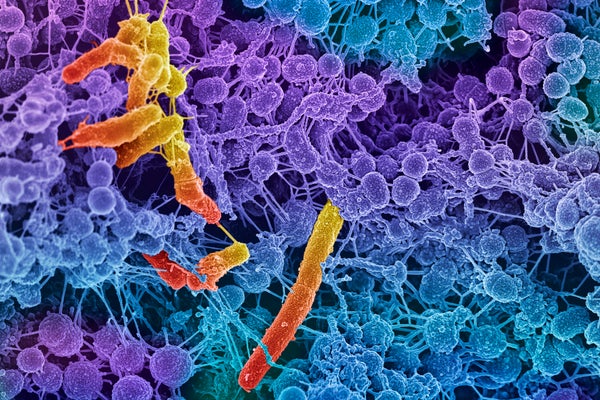February 16, 2024
3 min read
Rod-shaped fragments of RNA called “obelisks” were discovered in gut and mouth bacteria for the first time
For the first time, scientists have spotted rogue bits of RNA colonizing the bacteria in our gut. These “obelisks,” as the researchers have dubbed them, may represent a whole new class of infectious agent.
“It’s just super thrilling,” says Kathleen Hefferon, a microbiologist at Cornell University who was not involved in the research. The study is available on the preprint server bioRxiv and is not yet published in a peer-reviewed scientific journal.
To detect the obelisks, lead author Ivan Zheludev of Stanford University and his colleagues sifted through data from an RNA database containing thousands of sequences isolated from human excrement. RNA is similar to DNA but is usually a single strand of “letters,” or base pairs, rather than a double strand, and it typically conveys messages from DNA that instruct the body to make proteins. The researchers identified thousands of distinct loops of single-stranded RNA that did not code for proteins. They even found one group of obelisks inside the common mouth bacterium Streptococcus sanguinis. Additionally, they analyzed information on the mouth and gut microbiomes of 472 people from five previous studies and detected obelisks in nearly 10 percent of the participants.
On supporting science journalism
If you’re enjoying this article, consider supporting our award-winning journalism by subscribing. By purchasing a subscription you are helping to ensure the future of impactful stories about the discoveries and ideas shaping our world today.
Obelisks bear some resemblance to viroids—tiny, circular fragments of single-stranded RNA. Like viruses, viroids need a host to replicate, and they can infect and cause disease in eukaryotes, organisms with cells that have nuclei. Specifically, they have been documented extensively in flowering plants, as well as in a…
Read the full article here







